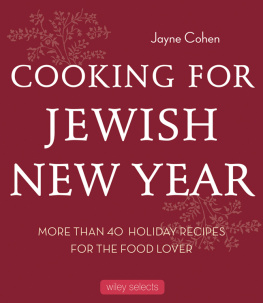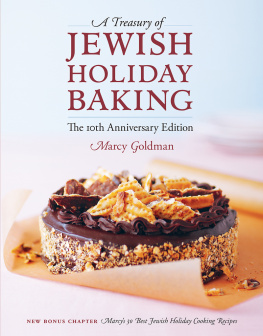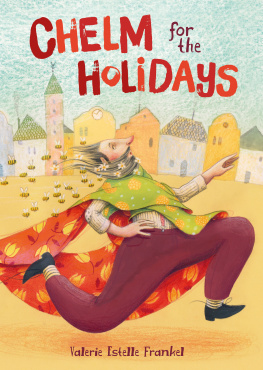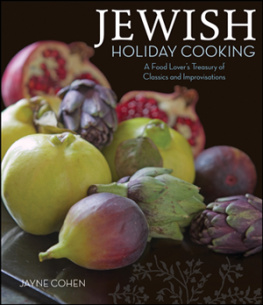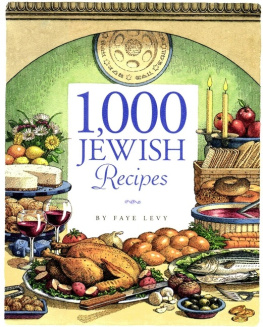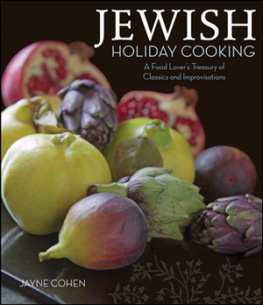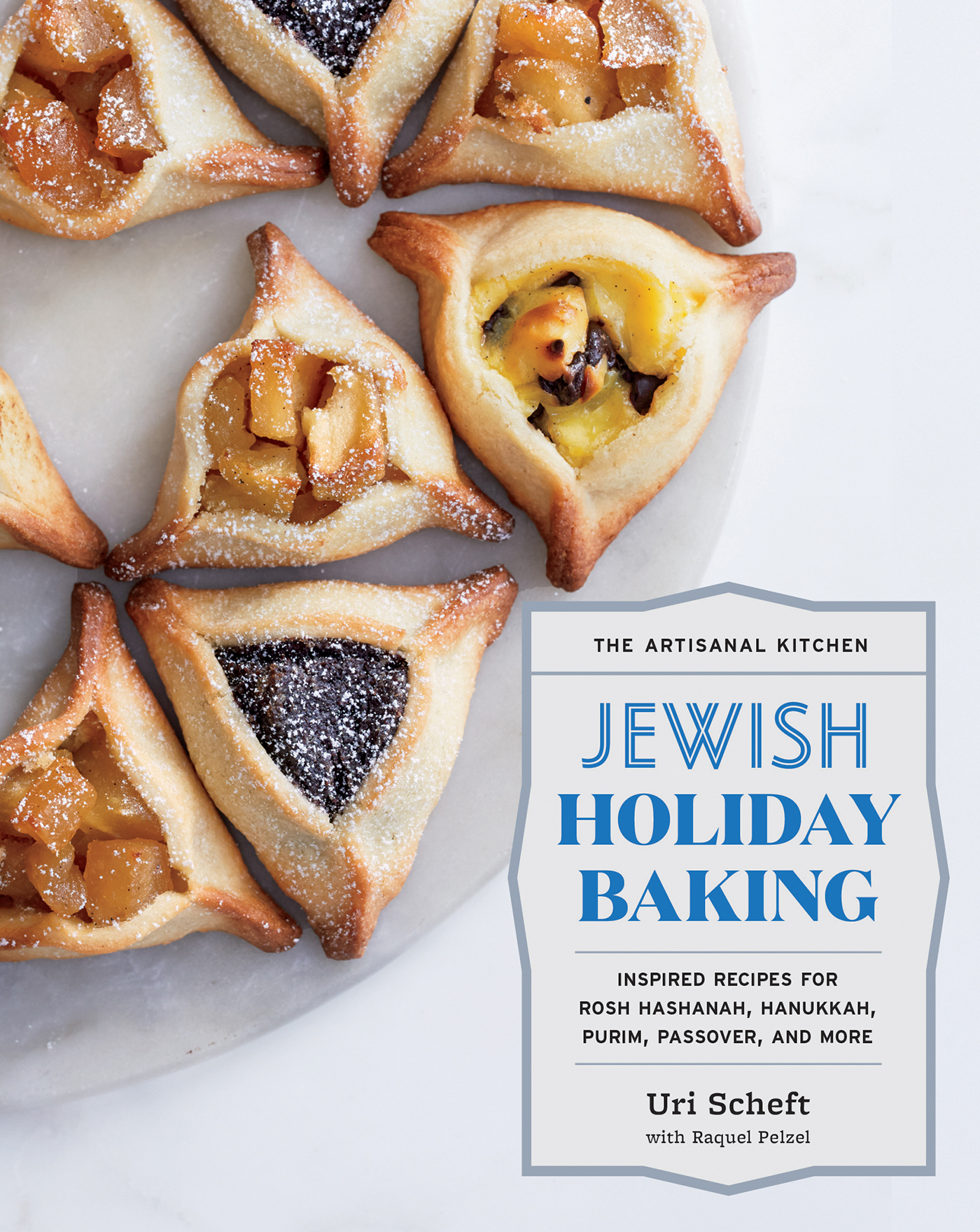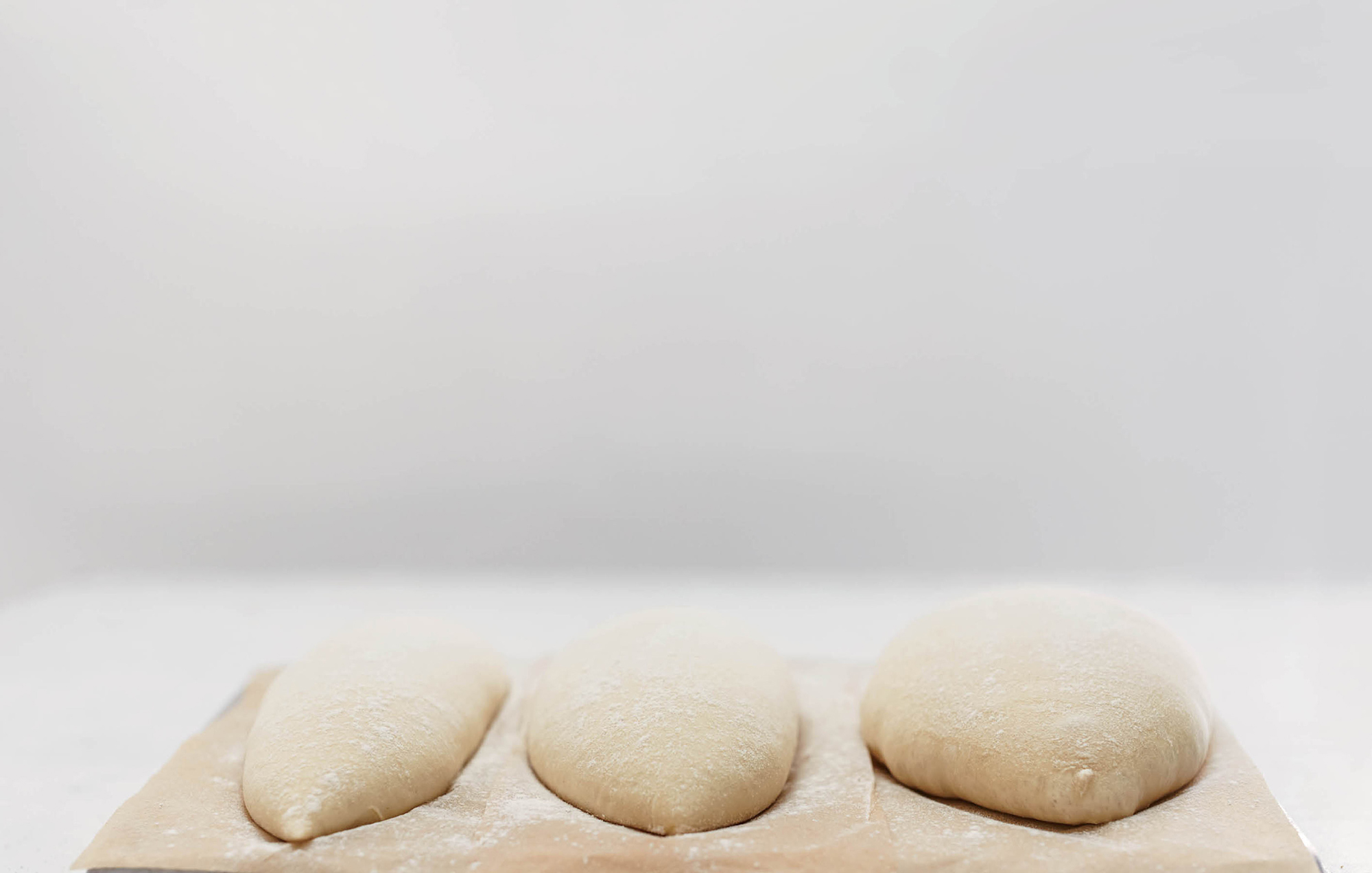Contents
Introduction
Baked goods made from scratch are beautiful and nourishing; they have the ability to bring people together around a table or even at a kitchen counter. Baking is also a special way to mark the holidays, whether youre gathering with a houseful of family and friends or celebrating with a small group or your local community.
This collection of foolproof baking recipes, divided into savory and sweet sections, offers you delicious breads and treats for the calendar year of Jewish holidays. There is something here for every table, every palate, and every season. Youll learn how to make Poppy Seed Hamantaschen for Purim, flour-free Coconut Macaroons for Passover, Crazy and Festive Challah for Rosh Hashanah, Jachnun for a Sabbath lunch, and other decadent and inspired recipes.
Challah is, at its essence, a bread meant for social occasions: religious events, holidays, weddings, and celebrations. It holds a distinct place on the holiday table. It is also the bread served on the dinner table for Shabbat. The person seated at the head of the table says a blessing over the bread before ripping it by hand and passing each person their own piece. Made with what were once considered expensive ingredients like eggs and sugar, challah is a lightly sweet and very tender bread that pulls apart into long cottony strands. The way challah is shaped makes it special too. It is no ordinary loaf or boule: the dough is braided. Once you master a simple challah braid, you can break with tradition and play with the wide variety of shapes that can be made from this forgiving and easy-to-work-with dough.
In both content and shape, hamantaschen is also steeped in traditions that add to its holiday charm. Typically filled with poppy seeds (a classic ingredient for Purim) and formed like a tricornered hat (the symbolism of which is heavily debatedHamans hat, the three fathers of Judaism, etc.), these versatile cookies lend themselves to countless variations. Once you are comfortable with the shaping of the delicate triangle, the filling possibilities are endless. Try recipes for both sweet (poppy seed or charoset) and savory (potato or beet) hamantaschen, but also have fun coming up with new combinations and finishing techniques for the cookies, such as mixing an apple filling with poppy seed filling or drizzling the baked and cooled sweet hamantaschen with melted chocolate.
Whether youre a seasoned baker or not, whether you are Jewish or not, you will be able to create these delicious holiday treats with confidence. Make no mistake: baking is a labor of love. But the options are infinite and aspirational once you get the hang of the classic recipes. For example, once you learn how to make basic babka, you can tackle unique recipes with traditional ingredients, like Apple Babka and Poppy Seed Babka. And the challah recipe, while delicious on its own, can be modified with limitless ingredientsfrom chocolate and candied orange peel to nuts, seeds, herbs, and marzipan. Challah can be a canvas for expressing your creativity.
Many of the bread recipes make multiple loaves, allowing you to freeze one or two to be enjoyed at a later date or to share with your friends and family at your next holiday gathering. The pastry and cookie recipesfrom Sufganiyot bursting with strawberry jam, chocolate or vanilla cream, or your favorite doughnut filling to Chocolate Rugelach with its to-die-for Nutella spreadare perfect for parties and gatherings as well, as they make enough for all to enjoy. You will be everyones favorite guest or host with these goodies in hand.
Coming together around the holiday table builds deep bonds, and the recipes here are meant to inspire you to get into the kitchen and break bread with loved ones, to continue with the old ways and create new ones, too.
A Few Notes, Tips, and Tricks
These insider tips will help as you follow the recipes in this book.
Batch Size and Increasing/Decreasing Batches Like a Baker
Youll notice that many of the recipes yield multiple loaves or dozens of cookies. When making dough in a stand mixer, small amounts of ingredients dont get handled as efficiently as larger amounts. So for the best results, make the breads and other recipes as described and share them with your family and friends or freeze some for later.
If you need to increase a batch of dough, use the weight of the flour in the recipe as your 100% benchmark. So if a recipe calls for 800 grams of flour and you want to increase it to an even, simple 1 kilo (1,000 grams), multiply the amount you want to increase it to (1,000 grams) by 100, to yield 100,000. Then divide 100,000 by 800 grams (the original amount of flour, your 100% benchmark) to get 125. Finally, divide 125 by 100 to get 1.25multiply all ingredients by 1.25 to get the new measurements. For example, if the recipe originally called for 25 grams of yeast, you multiply 25 grams by 1.25 to get 31.25 grams, which is the new amount of yeast (in grams) that you need to use in the enlarged recipe.
Calculation
based on 800 grams flour (100%)
800 grams = original amount
1,000 grams = amount you want to increase to
100 1,000 = 100,000 = 125
125 100 = 1.25
multiply all ingredient quantities by 1.25 to get new amounts
Before You Begin: Read, Weigh, Prepare
Read the recipe before you begin. Read the ingredients list, read the instructions, weigh all your ingredients, and get everything in order so you can follow the recipe exactly. Use a digital scale because it is more accurate than cup measures, meaning that your dough will be consistent from batch to batch.
You should also have all of your refrigerated ingredients at room temperature before beginningroom-temperature eggs beat with more volume; room-temperature butter creams more easily. For butter, you can microwave it in 10-second increments, checking it often, until it isnt cold but hasnt started to soften too much and become greasy.
Work Clean
Invest in a to remove excess flour and bits of dough from your work surface before sponging it off. If you start with a wet sponge, youll end up with a floury, pasty mess. Have a trash bag handy next to the counter or in the sink, or use a large bowl that you can wipe the garbage into. Keep everything clean and organized while you work.
Flour: Sifting
When flour is oxygenated, it allows for better gluten development, and the gluten can trap more air in the loaf. Sifting flour can increase a loaf of breads volume by 10 to 15%.
Flour: Converting All-Purpose to Whole Wheat
You can substitute up to 50% of the white flour in a recipe with whole wheat or spelt flour. You will have to add about 50 grams (3 tablespoons plus 1 teaspoon) more water to the dough to account for the heartier flour.
Dont Be Shy with the Add-ins
A general rule of thumb when adding chocolate, seeds, nuts, dried fruits, or grains to bread is to weigh the dough, then add 20% of the weight in extra goodies. Now, for some goodies, you will need to add extra water to account for the absorbent properties of the add-insthis is true for ingredients like quinoa and flaxseeds. Other extras, like sauted onion and olives, actually add moisture to the dough, so you might need to reduce some liquid in the recipe. This is definitely a key point to consider when mixing the dough. In addition, always make sure you get all the extra ingredients out of the bowl or measuring cup. What is left in the cup could be 10% of the volumethe goodies really do matter! Get it all in there!



